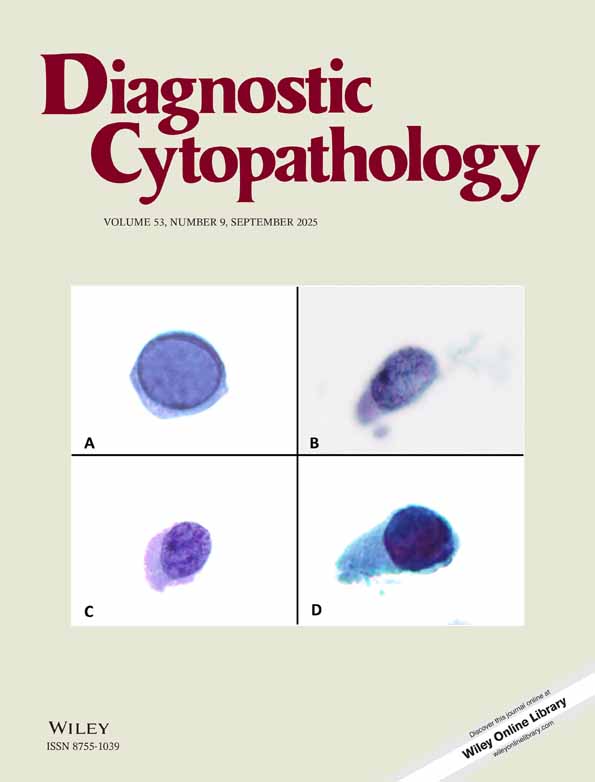Anaplastic spindle-cell squamous carcinoma arising in association with tall-cell papillary cancer of the thyroid: A potential pitfall
Abstract
Transformation of a differentiated thyroid carcinoma is an infrequent occurrence and is usually associated with a dismal prognosis. Following a long-standing history of papillary carcinoma of the thyroid, the patient in the present report developed anaplastic thyroid carcinoma. The anaplastic component initially arose in the setting of papillary carcinoma with tall-cell features, represented a very small proportion of the tumor, and was overlooked at the time of the original diagnosis. Several years later, the patient developed a recurrent neck mass. Fine-needle aspiration (FNA) of this mass revealed a population of atypical spindle cells arranged singly and in papillary clusters which lacked the classical cytologic features of papillary carcinoma of the thyroid. Histology of the resected mass revealed an unusual and recently described subtype of thyroid carcinoma, termed “anaplastic spindle-cell squamous carcinoma,” which has been reported as occurring in association with tall-cell papillary carcinoma. The FNA findings of this unusual subtype of anaplastic thyroid carcinoma are presented. Diagn. Cytopathol. 1999;21:413–418. © 1999 Wiley-Liss, Inc.




